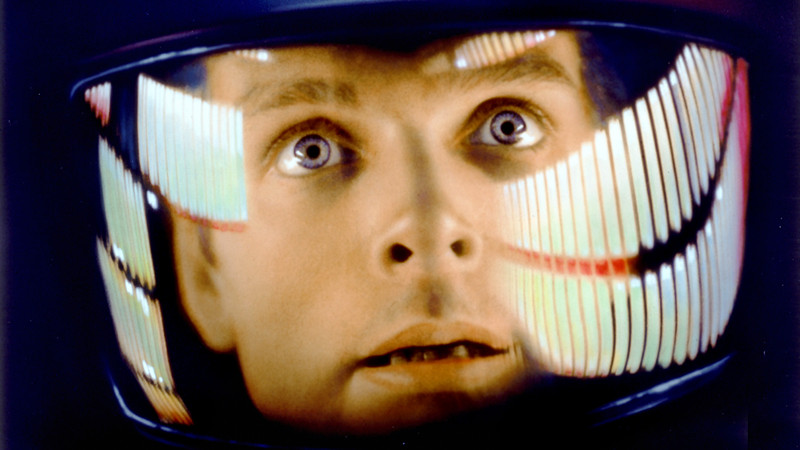
Making a strong case for being the most cine-literate mainstream record in recent memory, the last album by ever evolving British rock outfit Arctic Monkeys, Tranquility Base Hotel + Casino, a sometime concept piece revolving around a mid century style hotel on the Moon, is a truly inspired vision that brilliantly infuses cinematic influences with alluring sonic experimentation. Taking on alter-ego moniker ‘The Martini Police’ as well as a number of other characters, the band explored a sound and style that was largely separate from anything they’d ventured into before.
If that sounds cinematic, it’s no coincidence. In fact, prior to the album’s release, the band held a small film festival featuring classic cinema that heavily inspired it, offering fans a few clues into their new cosmic vision. These were later cleverly translated into every live show during the subsequent tour, which transported the audience to somewhere between a 1970’s episode of The Old Grey Whistle Test and the lunar Hilton hotel from 2001: A Space Odyssey.
Yet, the films that informed the cryptic lyrics, lavish style and vivid atmosphere of Tranquility Base amount to far more than the aforementioned. From European arthouse to independent American classics, lyricist Alex Turner’s ingenious melding of visions created an absolute treat for cinema fans.
Below is a mixture of films featured in the band’s mini-festival and ones cited in interviews by them as having a particular bearing on the unique and visionary album.
1. World On A Wire (1973)
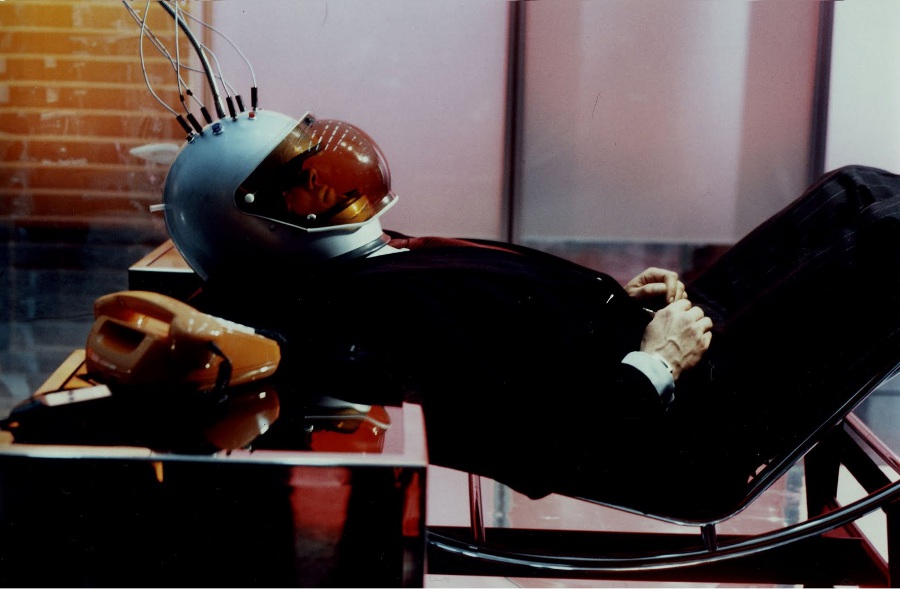
One that had a sizable visual effect on Turner yet was barely cited is this celebrated Rainer Werner Fassbinder sci-fi epic. Originally a 2 part T.V. mini series, World On A Wire’s story of a man uncovering a technological conspiracy that alters reality through computer simulation is undoubtedly one of the most inventive, inspiring and jaw dropping entries into the entire science fiction canon.
1970’s designs and clothing aside, Turner and Co. borrowed a lot from this forgotten slice of mind bending Euro cinema. Most obviously hinted at with a title drop during the aptly named song, ‘Science Fiction’, Fassbinder’s film comes into play in a major audio-visual sense for Tranquility Base.
The flashing red light, accompanied with a mechanical, synthesised keyboard note that brilliantly created a sense of anticipation near the beginning of the film, in a scene featuring a version of lead character Fred Stiller (Klaus Löwitsch) running back through a simulated world, crafted the same level of anticipation and excitement for every show of the Tranquility Base tour. Right after the lights went down, the venues were illuminated with the exact same mysterious sound and vision while the band eventually took to the stage, (dressed era appropriately for the 1970’s) in a perfect way to create a totally engrossing cinematic mystique for the live show. Add to that World On A Wire’s retro futuristic iconography, which is transported by the band through both inspired set design and typography, the later of which was directly lifted for the album’s marketing campaign, and it becomes a very clear connection to the album.
As well as this, World On A Wire’s general theme of ambivalent identity within a technological world is prevalent through every song on the record, wonderfully dovetailing with the echoes of other films that Turner eloquently borrowed from that deal with the same subject. The swooning of the lyric “…the time that I got sucked into a hole through a handheld device / I’ll flash back now and again, but I’m usually alright” on tenth track ‘Batphone’ stems from a plethora of influences, but takes on extra poignancy and imagination after Fassbinder’s sci-fi masterpiece is considered. Additional lyrical clues, including “I’ve got the party plugged right into my skull” in 9th track ‘She Looks Like Fun’ immediately evoke the image of Stiller hooked up to the virtual reality machine in the film, and “Just in time for my weekly chat / With God on video call” on 3rd track ‘American Sports’ is almost exactly what Stiller and love interest Eva Vollmer (Mascha Rabben) do when they uncover the virtual world, confronting it’s ‘God’. This utilisation of the film’s technological vocabulary is a perfect melding of old and new technological anxieties, a fascinating main theme in both Tranquility Base and World On A Wire.
2. Le Cercle Rouge (1970)
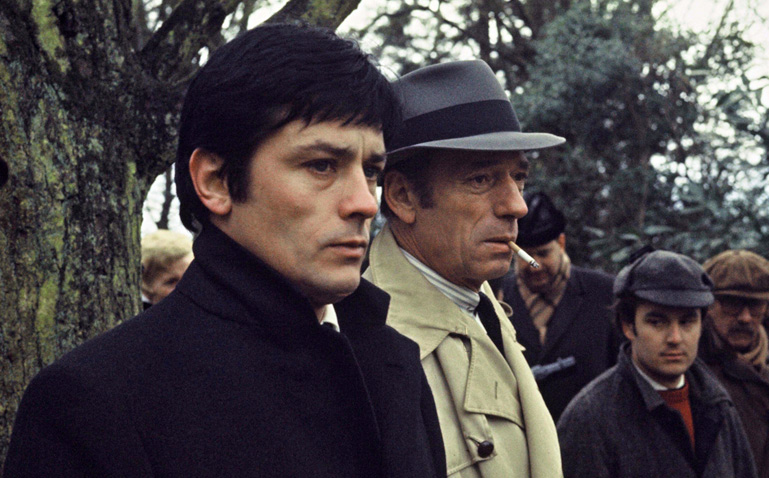
This early 70’s crime classic is not the last appearance of legendary director Jean-Pierre Melville on this list, and certainly not the last of French heartthrob Alain Delon.
According to Turner in an interview with Radio X, he was first introduced to the cinema of the largely unsung French New-Wave director by Loren Humphreys, the drummer for his baroque pop side project The Last Shadow Puppets. The films clearly informed the lavish mid-century style of that band’s last tour, and Melville’s echoing on Tranquility Base is even clearer, particularly from his penultimate film, Le Cercle Rouge.
In classic Melville style, it stars Delon as a recently freed bank robber who, unbeknownst to him, is transporting another former prisoner across police roadblocks. Slowly, the two work at getting back into the world of crime through a huge jewellery heist. All the while, they’re pursued by the police and mob alike, featuring brilliant performances from a myriad of Melville regulars.
Though the plot seems to have little bearing on the concept of lunar exploration, the one particular element of Le Cercle Rouge that so cleverly makes it’s way into Turner’s vision is central location Santi’s nightclub. The Atmosphere created in the jazz club (when Delon isn’t facing off against a gangster, of course) is duly recreated during the more lounge pop tracks of the record, such as ‘Star Treatment’ and ‘One Point Perspective’, informing both the album’s music and imagery heavily. The band’s concentrated lounge lizard sound and style means feel like they could easily slip into any scene set at the club, possibly being the house band that set the scene for the similarly cool patrons.
Le Cercle Rouge is also echoed in the music video for lead single, ‘Four Out Of Five’. The similar lighting and set design screams Santi’s, with Turner adding in another interview that while writing jazz chords for the tracks, he would often be reminded and inspired by the interior design of such clubs in Melville’s cannon.
3. Spirits Of The Dead (1968)
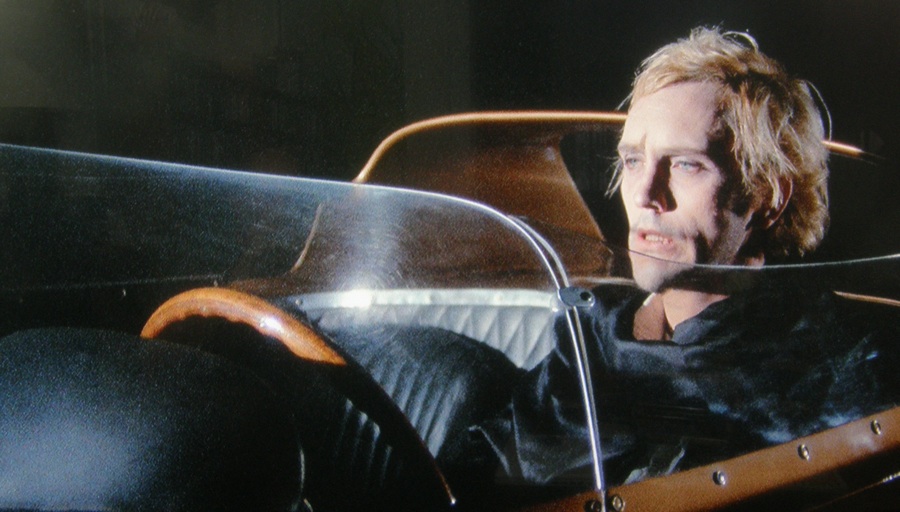
Continuing the theme of European arthouse, Turner managed to incorporate three director’s visions into one with this omnibus horror film.
Based on three Edgar Allan Poe short stories, filmmakers Roger Vadim, Louis Malle and Federico Fellini each bring to life a story of a countess in love with a horse, an army officer with a doppelgänger (double the Delon fun) and a Shakespearian actor battling with the devil, respectively. A terrifically enjoyable and sharply directed piece, the waves it made over half a century prior are subtly felt through Tranquility Base.
Each segment of the film relies on an unreliable narrator, meaning that the stories being told to the audience are unclear in their origin, and how that relates to the characters. It adds to an overarching dreamlike reality for all three segments, which the Monkeys successful applied to their latest. For example, with ‘One Point Perspective’, the lyrical content seems to form incoherent and unrelated threads, which Turner has confirmed is based upon this storytelling structure, never being sure who is voicing what for what purpose. In fact, it’s an atmosphere that permeates across the whole record. The band stated in interviews that, just like Spirits Of The Dead, the record was not a concept one, but more a collection of short stories told by unreliable narrators that share a common theme.
Aside from this, the final segment of the film, Fellini’s Toby Dammit, is the most notable within the Monkeys record. Not only can echoes of Nino Rota’s score be heard, mostly his use of glittering piano motifs and smooth xylophone hits, but the scene at the awards show has been noted by Turner as particularly inspirational. As Toby struggles to get his words out during a speech in front of an adoring audience, it may as well be Turner in his place, crooning the ‘One Point Perspective’ lyric, “Bare with me man, I Lost my train of thought’, especially when the frontman acted this out live in front of a venue full of fans during the album tour. The scene even features a house band that could easily be the Monkeys themselves with enough imagination, surrounded by set design that would later be hinted at in the tour for the album.
4. Inherent Vice (2014)
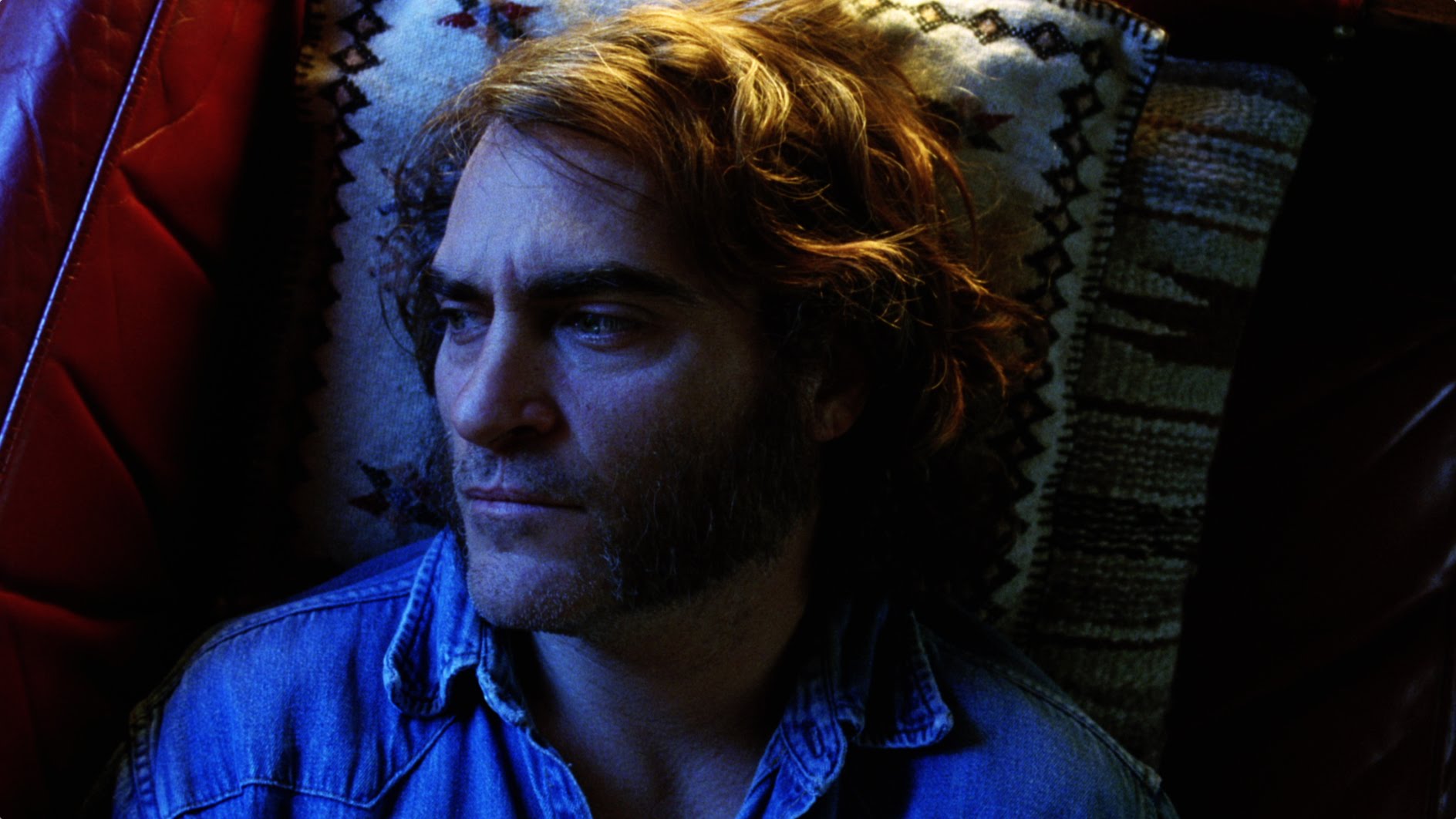
Though set during the era most of these films were made in, Paul Thomas Anderson’s psychedelic P.I. romp makes the first and only contemporary title on this list, and was actually one shown during the Tranquility Base mini film festival.
In 1970 L.A., hippie detective Larry ‘Doc’ Sportello (Joaquin Phoenix) becomes embroiled in a convoluted web of political intrigue, cultism and wayward property developers as he tries to find his ‘Ex-old lady’, Shasta Fay Hepworth (Katherine Waterston). Featuring an all star cast and expert direction, it’s an absorbing and endlessly entertaining exploration into hippie culture, burgeoning crime and the foreboding notion that trying to live within a memory will do someone far more harm than good.
It’s songs like album closer ‘The Ultracheese’ that really bring this film into the frame, with lines such as “Maybe I shouldn’t ever have called that thing friendly at all” and “Get freaked out from a knock on the door” being things that actually happen to Doc during the opening of the film. The lyrics translate the same way, with the cold note Shasta ended her and Doc’s friendship/relationship on forever playing with Sportello’s mind, being so lost in his memories that when she knocks on his door, he’s certainly more than ‘freaked out’.
Doc’s constant drug use through Inherent Vice leads to many an ambivalent epiphany in much the same way Turner has across the album, with both strictly underpinning this with a romantic longing, glaringly exemplified in the track ‘Golden Trunks’. Though this sees the Monkeys muse about ‘Bendable figures with a fresh new pack of lies’ and an unnamed world leader appearing like a wrestler, it always circles back to a chorus of “In response to what you whispered in my ear / I must admit, sometimes I fantasise about you too’. This is just like Doc, who after uncovering huge conspiracies such as the Golden Fang crime syndicate, is hopelessly sidetracked by the slightest memory of mention of Shasta. Turner distills Inherent Vice down to it’s core themes, smartly mixes it with his own trademark romanticism, and creates a heartbreakingly concise narrator, that could easily be the author of each song on the album.
5. The Last Waltz (1978)
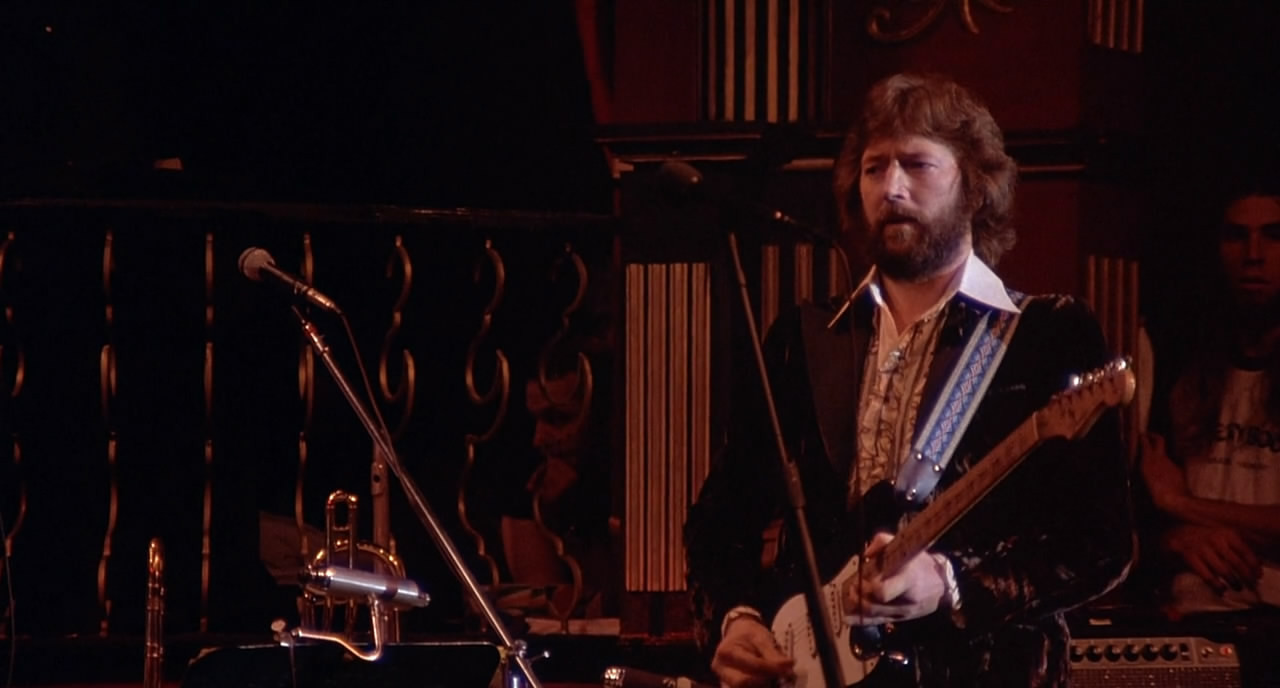
Another chosen for the lucky few that made it to the Monkey’s film fest, this next pick had far more of an imprint on the band than just the big collars and flared suit trousers.
Martin Scorsese’s seminal rockumentary capturing the supposed final concert of The Band was a showcase of rock royalty for it’s time. The former Bob Dylan backing group are not only seen playing hits with him, but the likes of Neil Young, Joni Mitchell and Ringo Starr join them on stage for the grand celebration. As well as concert footage, Scorsese treats fans to artistically staged performances and insightful interviews.
Though, of course, Turner and Co. sported similarly sharp suits, wide collars and stylish shirts to The Band for their Tranquility Base era, melding a sense of Melville class with 70’s high fashion, the connections between The Last Waltz and the Monkeys’ last album go far deeper. Indeed, as part of the lyrics alluding to fond memories that detail the record, many mention parties and conversations with old friends. ‘The Ultracheese’’s “We’ll be there at the back of the bar / In a booth, like we usually was’ is one of a few that hint, just as the film’s audience sees The Band, we’re seeing Turner in a purely content state at an event that has already happened, surrounded by friends in a moment that will never occur again. Both ‘The Ultracheese’ and The Last Waltz are touching snapshots of a very specific and cherished memory.
As well as this, the stage lighting and camera work of the album’s tour were near identical to the ones seen in the rockumentary. Surrounded by a uniformed ‘film crew’ with 70’s era cameras filming the band for the arena screens of the bigger shows on the tour, the concert goers were treated to Last Waltz-esque visuals as the live show happened before them. The lights flared across each lens in much the same way they did to legendary cinematographer Michael Chapman’s camera in 1978. It was a truly brilliant way to make the Monkeys’ audience feel like they were part of something truly cinematic and inspired, unlike any major rock concert since, but just as special (albeit for different reasons) as The Band’s concert in The Last Waltz.